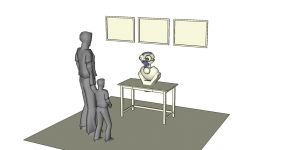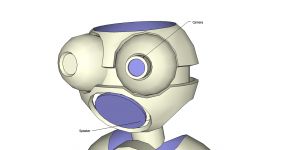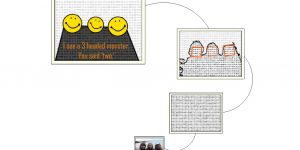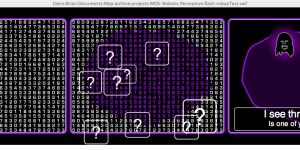Brian Knep
Robot Vision was designed for the Star Wars: Where Science Meets Imagination exhibit, which was created by the Museum of Science, Boston and has since traveled around the world. The goal was to show how robots perceive and make sense of the world: sensors measure the environment; these measurements are converted to numbers; algorithms look for patterns in the numbers; algorithms come to conclusions based on the patterns and heuristics; and violating these heuristics makes it easy to fool the computer.
A larger than life-size, robotic head sits on a pedestal. It has a camera in one eye and a speaker in its mouth. The top of the head is open and wires lead from the head to LCD panels above the head. The robot looks at the people in front of it and tries to guess who or what is there. It tries to figure out the number of people there and perhaps their ages or genders. Sometimes these predictions are funny; if three kids are closely clumped together, the robot might guess that there’s a three-headed monster nearby. The guesses are displayed and read out through the mouth speaker. The entire perception process is illustrated in the overhead LCD panels. The audience gets involved in trying to understand how the perception is working, and how to fool it.




